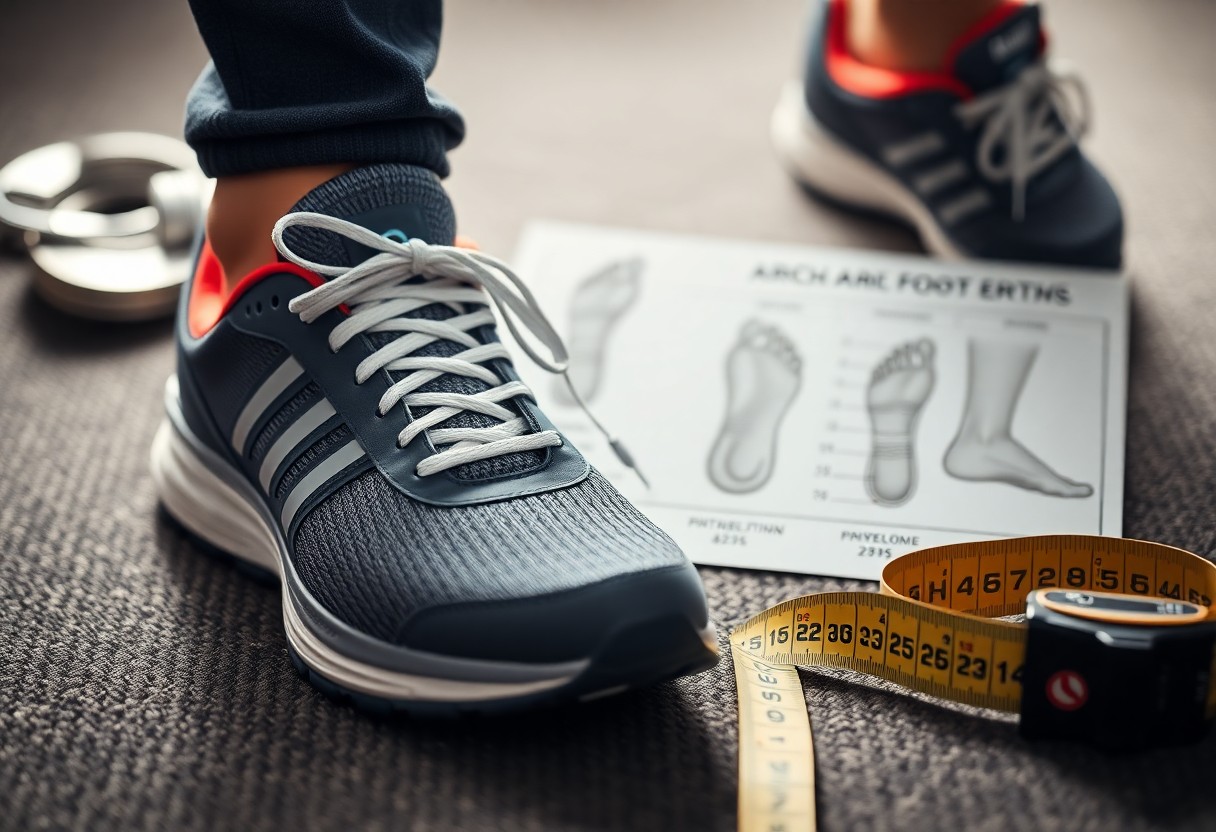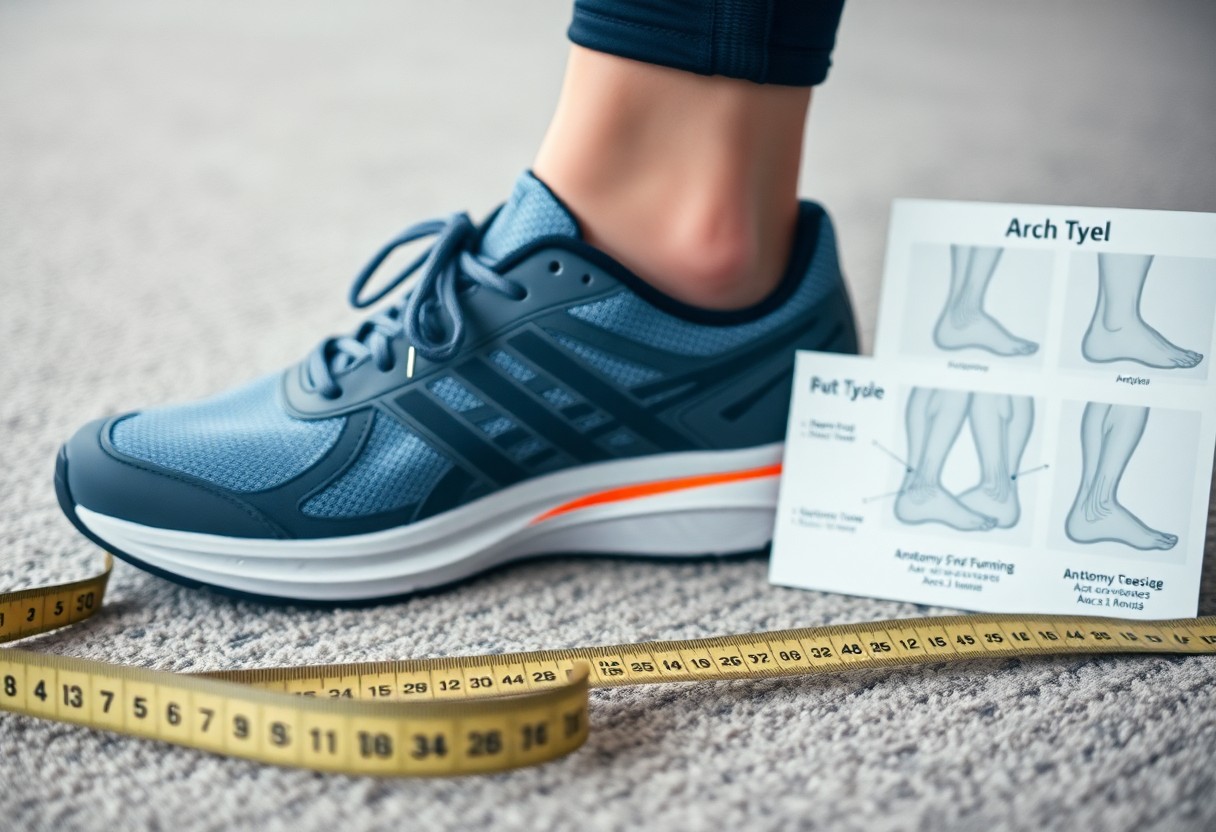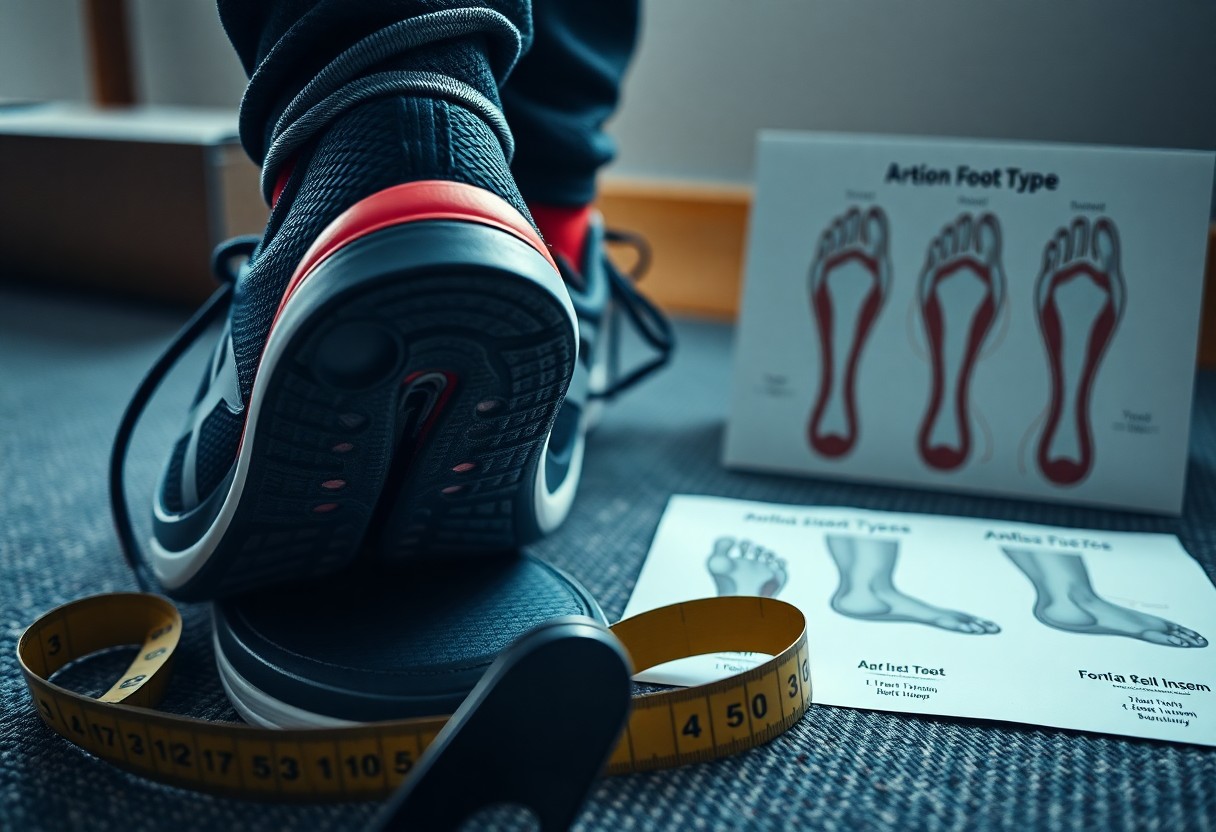Effectively supporting your feet goes beyond merely adding arch support to your shoes. It may surprise many that the majority of people do not actually need arch support in their footwear. Scientific research indicates that forgoing arch support can significantly strengthen your foot muscles. Over time, depending too heavily on artificial support can lead to muscle atrophy and weakness. The human foot is inherently designed with natural arches that flex and adapt to different surfaces, and restricting this natural motion with rigid supports can negatively impact your foot health in the long run. This detailed article seeks to clarify the science behind arch support, empowering you to make educated choices regarding your foot health.

Uncovering the Historical Development of Arch Support in Footwear
The natural support system of your feet has played a crucial role in the evolution of footwear design for centuries. The concept of arch support gained immense popularity in the 1920s when Dr. William Scholl revolutionized the industry by introducing commercial orthotics. Before this innovation, individuals relied on the natural strength and flexibility of their feet. Understanding this historical context sheds light on how our perceptions of foot health have transformed over time and highlights the importance of recognizing the body’s natural capabilities.
Tracing the Evolution of Traditional Footwear Practices
The progression of footwear throughout history illustrates that ancient civilizations primarily utilized simple, flat sandals or often went barefoot. Such practices encouraged natural foot development and strength. The feet of our ancestors remained strong and flexible, thriving without artificial supports, as evidenced by research on indigenous groups that continue to follow traditional footwear practices. This historical viewpoint emphasizes the vital role that natural foot mechanics play in sustaining optimal foot health and function.
Evaluating Modern Practices in the Shoe Industry
By the mid-20th century, particularly in the 1950s, shoe manufacturers began to integrate built-in arch support as a standard feature in footwear. Today, most contemporary shoes are designed with structured arch support, a component that has become commonplace despite the limited scientific evidence supporting its necessity for everyone. This trend reflects a shift in consumer expectations and industry standards, raising critical questions about how such designs may influence long-term foot health.
Currently, arch support is ubiquitous, with 70% of modern shoes featuring this characteristic. However, research published in the Journal of Foot and Ankle Research indicates that excessive reliance on arch support could lead to muscle weakness in your feet. As a result, many podiatrists now recommend incorporating periods of barefoot walking and the use of minimally supportive shoes to help maintain natural foot strength and flexibility.

Examining the Complex Structure of Foot Anatomy
Your feet consist of 26 bones, 33 joints, and over 100 muscles, functioning most effectively when allowed to move freely. The foot’s arch serves as a self-supporting structure, gaining strength through regular use, while becoming weaker when subjected to artificial support. Research shows that 75% of individuals wearing conventional shoes with arch support experience diminished activity in foot muscles, which can contribute to a decline in overall foot strength over time.
Understanding the Mechanics of Natural Foot Movement
The design of your foot is a remarkable feat of engineering, encompassing a complex system of self-supporting structures. Walking barefoot or in minimal footwear fosters a full range of motion, allowing your arches to flex and strengthen naturally. Studies indicate that people who frequently walk barefoot or choose minimal shoes develop stronger foot muscles and more stable arches compared to those who depend on supportive footwear. This underscores the critical importance of natural movement in promoting foot health and function.
Optimizing Foot Muscle Function and Growth
Interrupting your foot’s natural movement can significantly hinder its development. Your foot muscles require regular engagement through natural activities to maintain their strength. Findings published in Nature suggest that wearing shoes without arch support encourages the growth of stronger intrinsic foot muscles. This connection highlights the significance of allowing natural movement for optimal foot health and well-being.
Additionally, it’s essential to understand the ramifications of wearing shoes with built-in arch support. Such footwear may cause foot muscles to become less engaged, leading to potential weakness over time. Studies reveal that transitioning to minimal footwear can result in a remarkable increase in foot muscle strength by as much as 60% within eight weeks. However, it’s crucial to undertake this transition carefully, especially for individuals with existing foot conditions, to mitigate the risk of injury.
Investigating Research and Evidence on Foot Health Dynamics
If you’re keen to comprehend the scientific principles behind arch support, numerous studies show that your feet can indeed become stronger without the need for artificial support. Various investigations reveal that natural foot movement promotes better muscle development and enhances arch stability, emphasizing the critical role of biomechanics in maintaining foot health.
Highlighting Significant Scientific Studies on Arch Support
Among the most impactful research findings, a study published in Nature indicates that individuals who opt for minimal footwear develop foot muscles that are 50% stronger compared to those who wear traditional supportive shoes. This evidence supports the premise that consistent movement and exercise enable your feet to maintain their arches naturally and effectively.
Conducting a Comparative Analysis of Footwear Choices Across Different Populations
Contrasting Users of Traditional and Minimal Footwear
| Traditional Shoe Users | Minimal Shoe Users |
| Exhibit higher rates of flat feet | Demonstrate superior arch strength |
| Show weaker foot muscles | Exhibit stronger foot muscles |
A comprehensive analysis of diverse populations reveals significant disparities in foot health. The type of footwear you choose has a profound impact on your foot structure and overall well-being.
Insights from Global Population Studies
| Developed Countries | Barefoot Communities |
| 20% flat foot occurrence | 3% flat foot occurrence |
| Higher reliance on arch support | Natural arch strength |

Unraveling the Support Paradox in Footwear Choices
Challenging common misconceptions, overreliance on arch support in shoes can undermine your feet’s natural strength. The human foot is intricately designed with a sophisticated system of muscles, tendons, and ligaments that work together to provide natural support. When artificial arch support assumes this function, your foot muscles may become less engaged, leading to gradual weakness and potential complications.
Examining the Dependency Cycle Associated with Arch Support
The continual use of arch support cultivates a harmful dependency cycle. Feet can become overly reliant on external support, resulting in muscle atrophy. Research indicates that 70% of individuals who regularly utilize arch support report increased discomfort when walking without their supportive shoes, highlighting the emergence of this dependency.
Exploring the Link Between Muscle Weakness and Arch Support Usage
Wearing shoes equipped with built-in arch support may weaken your intrinsic foot muscles by as much as 50%, according to findings published in Nature. This weakening compromises your feet’s natural arch support system, potentially leading to conditions like flat feet and other related issues. Importantly, this muscle weakness can extend beyond your feet, as weakened foot muscles can negatively affect your overall posture and balance. Research suggests that individuals who transition to minimal footwear often experience a 60% increase in foot muscle strength within six months.
Exploring Natural Alternatives for Enhanced Foot Health
For those interested in moving away from conventional arch support, a variety of natural options are available that can bolster foot strength. These methods encourage your feet to function as they were naturally designed to, facilitating the development of stronger foot muscles and more stable arches through organic movement.
Adopting Minimalist Footwear for Enhanced Natural Movement
Minimalist shoes, which feature zero drop soles, wide toe boxes, and flexible materials, promote unrestricted foot movement. These designs allow your feet to function optimally, supporting proper mechanics and fostering natural arch strength. Research indicates that regular use of minimal footwear can enhance foot muscle strength by up to 60% through everyday activities, contributing significantly to overall foot health.
Safe Strategies for Transitioning to Minimal Footwear
When considering a shift to minimalist footwear, it’s essential to adopt a cautious and gradual approach to ensure your comfort and safety. Begin by wearing minimal shoes for short durations, progressively increasing the length of time over several weeks. This method helps prevent overuse injuries as your feet adapt to their newfound freedom, facilitating a smoother transition.
A successful transition should ideally include targeted foot strengthening exercises. Start with 10-15 minutes per day in minimal shoes, gradually adding an additional 5-10 minutes each week. Incorporate activities such as toe spreads and short barefoot walks on safe surfaces. This incremental strategy allows you to minimize the risk of common transition injuries while effectively building your natural arch strength.
Addressing Individual Medical Considerations for Optimal Foot Health
It’s vital to recognize that your foot health demands personalized attention. While natural foot movement is advantageous for muscle strength, certain medical conditions may require specific support. Factors such as your foot structure, activity level, and any existing medical conditions will significantly influence your ideal footwear needs.
Recognizing When Arch Support Is Essential
Contrary to popular belief, arch support is not universally necessary. However, individuals experiencing acute injuries, severe flat feet, or specific medical conditions may benefit from temporary or ongoing arch support. Research indicates that only 10-20% of the population genuinely requires specialized arch support for medical reasons, underscoring the importance of personalized assessments to determine the right course of action.
Guidelines for Comprehensive Professional Foot Health Assessments
To ensure informed decisions regarding your footwear, consulting a foot health professional is highly recommended. Comprehensive assessments should include gait analysis, evaluation of foot structure, and a review of your medical history. These components are crucial for determining whether you need arch support or if transitioning to minimal footwear is a feasible option.
Support from a qualified professional can provide valuable insights and guidance for your foot health journey. A thorough assessment should encompass measuring arch flexibility, assessing muscle strength, and analyzing walking patterns. Your healthcare provider should also consider your daily activities and any past foot injuries to formulate an effective treatment plan tailored to your unique needs.
Reevaluating Footwear Choices and Their Impact on Foot Health
Your choice of footwear plays a significant role in shaping your overall foot health. It becomes clear that arch support is not a necessity for most individuals and may actually contribute to weakened foot muscles over time. Your feet possess inherent strength and flexibility, functioning best when allowed to operate as nature intended. If you’re contemplating a transition to minimal footwear, initiating this process gradually will help your feet adapt effectively. The evidence strongly supports the notion that allowing your feet to function without artificial support can lead to stronger muscle development and improved foot health for the majority. Always take your personal needs into account and consult a foot health professional for specific concerns.
Frequently Asked Questions About Arch Support and Foot Health
Are arch supports necessary for healthy feet in shoes?
Most healthy feet do not require arch support in shoes. Research indicates that natural foot strength develops more effectively when artificial support is absent. The muscles and arches of the foot perform optimally when allowed to operate naturally, consistent with findings from populations that frequently go barefoot or prefer minimal footwear, which exhibit stronger foot muscles and fewer arch-related issues.
Can prolonged use of arch support weaken feet over time?
Yes, extended reliance on arch support can result in weakened foot muscles. When artificial support replaces the function of foot muscles, these muscles become less engaged, gradually losing strength. This creates a cycle of dependency. Research published in Nature indicates that individuals who consistently wear traditional shoes with arch support often exhibit weaker foot muscles compared to those who opt for minimal footwear.
Who genuinely needs arch support in their footwear?
Certain individuals with specific foot conditions, injuries, or medical issues may genuinely benefit from arch support. This includes those diagnosed with flat feet, specific foot injuries, or structural abnormalities. However, these situations should be evaluated by a foot health professional capable of developing an appropriate treatment plan. The goal should be to restore natural foot function whenever feasible, rather than depending on permanent support.
The Article Arch Support: Essential Facts About Shoe Necessities Was Found On https://limitsofstrategy.com


No responses yet